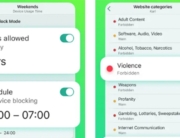Do not let 5 minutes stay between you and a significant connection!
Require advice that is dating to generally meet times or perhaps brief on time?
This is often where a expert introduction solution and dating mentoring can gain you!
Don’t allow five full minutes stay between you and a connection that is meaningful!
Best online site chicago that is dating
Once the conditions fall and the times have smaller, singles grab their cellphones to get that unique somebody. Yep, it is cuffing season.
Best on the web site chicago that is dating
Once the conditions fall and the times have smaller, singles grab their cellphones to get that unique somebody. Yep, it is cuffing season.
“It’s when individuals begin contemplating settling straight down and getting a partner, ” said Bela Gandhi, relationship specialist and creator of this Smart Dating that is chicago-based Academy. “As christmas roll around and especially whenever you speak about New Year’s resolutions, folks are positively thinking about finding love. ”
Best online site chicago that is dating
You can consider the analysis of Figure 1 as supplying some reason for past studies that concentrated on demographics within geographically localized communities. Even though some mate pursuit does occur at longer distances, actions are considerably curtailed by geography, and demographic habits of interest can clearly be seen most in smaller areas. Most studies that are prior have the downside of considering just the populace as entire, nevertheless, and never especially the populace of mate seekers and of lacking, in most situations, direct data on dating and courtship interactions.
Abstract
We learn the dwelling of heterosexual markets that are dating the usa through an analysis of this interactions of a few million users of
A big dating that is online, using recently developed community analysis ways to the pattern of communications exchanged among users. Our analysis suggests that the strongest motorist of intimate relationship during the nationwide degree is easy geographical proximity, but during the neighborhood degree, other demographic facets come right into play. We discover that dating areas in each town are partitioned into submarkets along lines of age and ethnicity. Intercourse ratio differs widely between submarkets, with younger submarkets having more guys and less ladies than older ones. There is a noticeable propensity for minorities, particularly females, become more youthful compared to the average in older submarkets, and our analysis reveals exactly how this sort of racial stratification arises through the texting decisions of men and women. Our research illustrates just exactly how system strategies used to online interactions can expose the aggregate results of specific behavior on social structure.
HABITS of intimate and sexual partnerships—who pairs with whom—have broad implications for health insurance and culture. As an example, the amount of assortative mating (the extent to which like pairs with love) is definitely considered an indication of societal openness (Glass 1954; Kalmijn 1991). Mating patterns also regulate how wide range and resources are transmitted from one generation to a different (Schwartz 2010; Breen and Salazar 2013), have actually implications for psychological and real wellness (Waldron, Hughes, and Brooks 1996; Smith and Christakis 2008), and form intimate networks that drive the spread of sexually transmitted infections (Morris and Kretzschmar 1995; Liljeros et al. 2001).
There is certainly a thorough empirical and literature that is theoretical the mechanisms behind habits of intimate pairing (Kalmijn 1998; Schwartz 2013). In communities where individuals choose their own mates, it really is commonly accepted that romantic pairing is driven by the interplay between people’ choices for lovers in addition to structure associated with pool of prospective mates (Becker 1973; Mare 1991; Xie, Cheng, and Zhou 2015). The method could be modeled game theoretically as an industry for which people make an effort to get the match that is best they could susceptible to the preferences of other people (Gale and Shapley 1962; Roth and Sotomayor 1992). There is a big human anatomy of empirical work that papers the partnership between observed partnering habits plus the method of getting lovers as mirrored within the populace structure of urban centers, regions, or nations (Blau, Blum, and Schwartz 1982; Lichter, LeClere, and McLaughlin 1991; Southern and Lloyd 1992a, b; Lichter, Anderson, and Hayward 1995; Angrist 2002; Blossfeld and Timm 2003; Guzzo 2006; Harknett 2008; asian dating Trent and Southern 2011).
These studies are limited, nevertheless, in just what they could expose in regards to the framework of dating or wedding areas.
One problem is us to treat entire towns or cities as a single undifferentiated market that we typically do not have access to the actual population of available dating partners and must instead make do with proxies such as census data, obliging. An even more fundamental problem is past studies have only looked over extant partnerships rather than the more expensive group of all courtship interactions among mate-seeking individuals. To be able to precisely study dating areas, you need data on all courtship overtures that happen within the focal population: not merely those who are effective and end in a partnership but also those who are refused. The complete set of such overtures forms a connected network whose structure can be analyzed to reveal key features of romantic markets as we show in this article.
Regrettably, complete information on courtship interactions are historically difficult to find because unrequited overtures are seldom documented. The few empirical studies which have straight observed courtship habits have actually had a tendency to concentrate narrowly on particular organizations, subpopulations, or geographical places (Sprecher et al. 1984; Laumann et al. 2004), and relatively small is famous in regards to the empirical structure of intimate and intimate areas throughout the population that is general just how this framework differs in one locale to a different.
The advent of online dating sites and its particular dazzling increase in appeal throughout the last 2 decades has, nevertheless, developed a brand new possibility to learn courtship actions in unprecedented information (Rosenfeld and Thomas 2012). Here we report on a quantitative research regarding the framework of adult romantic relationship markets in the usa utilizing nationwide information on online-dating users and their habits. We combine task data for an incredible number of individuals with recently developed system analysis ways to shed light in the popular features of relationship areas in the largest scales. There has been current studies utilizing early-stage patterns of online mate choice—who browses, associates, or reacts to whom—to shed light on individuals’ preferences for mates (Hitsch, Hortasu, and Ariely 2010; Lewis 2013; Lin and Lundquist 2013; Bruch, Feinberg, and Lee 2016), however the work introduced right right here goes beyond these studies to look at exactly just how people’ choices aggregate collectively to generate organized relationship areas that highly impact individuals experiences that are’ dating.
The information we assess originate from a popular United States website that is dating significantly more than 4 million active users during the time of our study. Our analysis is targeted on all (selfidentified) heterosexual, single people whom delivered or received a minumum of one message on the internet site through the amount of observation—January 1, 2014, to January 31, 2014—and whom suggested they had been pursuing some kind of partnership (long-lasting relationship, short-term relationship, and/or intercourse). For every single individual, we’ve a selection of self-reported characteristics that are personal with time-stamped documents of all of the messages exchanged on the webpage. It’s the latter which are the principal focus of y our analysis since it is the messaging patterns that expose the aggregate interest in individuals in the market.
We quantify messaging habits making use of ways of community analysis (Newman 2018).
We examine the pair of all reciprocal interactions between opposite-sex users, meaning pairs of people between who one or more message had been sent in each way when you look at the set. Reciprocal interactions we decide to try be an indication of set up a baseline amount of shared interest between possible partners that are dating. Our main focus is on knowing the unit regarding the online-dating population into distinct submarkets: how can the marketplace divide into subpopulations of daters, and exactly how are those subpopulations characterized? We define submarkets as approximately self-contained categories of people in the community so that many exchange that is reciprocal of does occur within teams. This corresponds closely in to the established concept of “community framework” in network concept, a residential area in this context being fully a tightly knit subgroup of people within a more substantial system. Lots of sensitive approaches for the detection of community communities have already been developed in the last few years, and now we use a selection of those methods right right right here (Fortunato 2010). Technical information on the algorithmic practices utilized in our calculations get within the materials that are supplementary.






